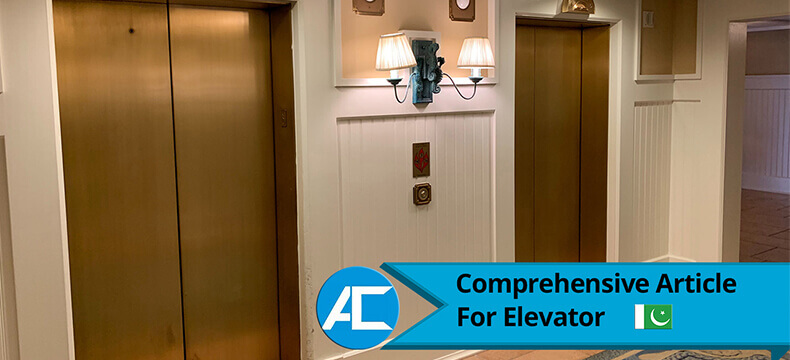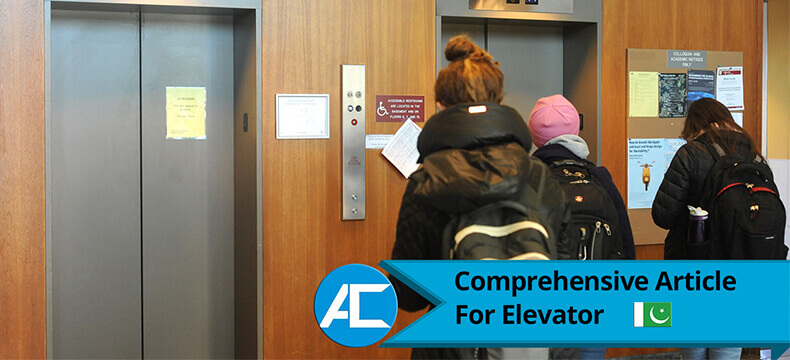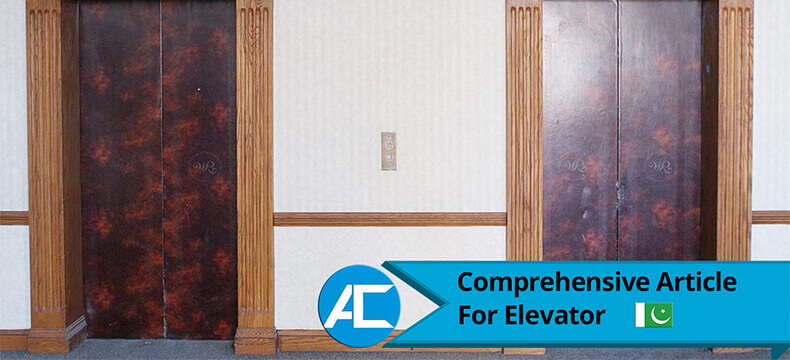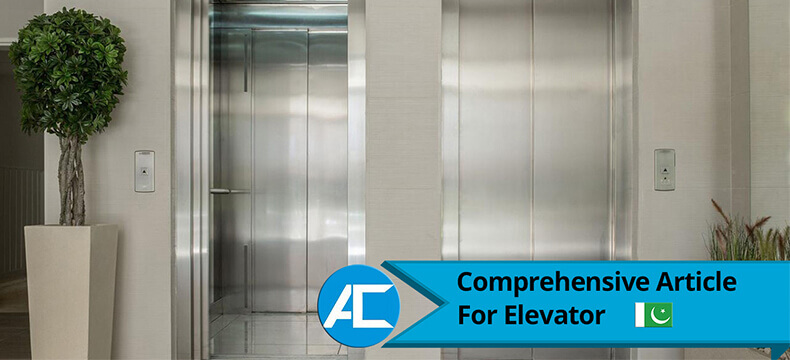Elevator technology, a cornerstone of modern urban life, has evolved significantly over the years. Access Technologies, led by Imran Rafi, stands out as a premier elevator provider. Transitioning from manual pulley systems to automated marvels, Access Technologies’ elevators have revolutionized vertical transportation. The mechanism operates through a motor-driven pulley system, lifting and lowering cabins using sturdy cables. Safety innovations, such as braking systems and emergency brakes, ensure passenger security. Additionally, advanced control systems streamline elevator movement, optimizing efficiency and reducing wait times. Elevators also play a crucial role in accessibility, with features like ramps and audio announcements benefiting diverse users. As we glimpse into the future, smart elevators equipped with AI promise even greater efficiency and convenience. In urban landscapes where space is precious, elevators, especially those offered by Access Technologies and guided by Imran Rafi’s vision, continue to shape the way we navigate and connect.
History of Vertical Transportation

The history of vertical transportation is a fascinating journey through time. From its humble beginnings as simple hoists powered by human or animal strength, vertical movement has evolved into an intricate system of elevators that seamlessly transport people and goods between levels. Ancient civilizations used basic pulley systems to aid in construction and other tasks requiring vertical mobility. The innovation of counterweights and steam power in the 19th century paved the way for the modern elevator. Elisha Otis’ groundbreaking safety brake design in 1852 further propelled the industry’s growth by assuring passenger safety. As cities expanded vertically, elevators became integral to architecture and urban planning. Today, advanced technology continues to shape the evolution of vertical transportation, enhancing speed, safety, and sustainability in this vital aspect of modern life.
Get Free Quotes: 03017940456Key Elevator Components Explained

Understanding the fundamental components of elevators sheds light on their complex yet efficient operation. The elevator system consists of several key parts working in harmony to ensure safe and smooth vertical movement. The elevator car, where passengers and goods are transported, is suspended by strong steel cables. These cables are connected to a counterweight that balances the car’s weight, enhancing energy efficiency. The electric motor powers a pulley system that drives the movement of the elevator. Safety mechanisms like the governor and safety brake prevent uncontrolled acceleration and provide emergency stops. Control panels allow users to select their desired floor, while sensors ensure accurate leveling. Regular maintenance of these components is essential for reliable performance, underlining the importance of each element in the elevator ecosystem.
Safety Measures and Regulations

Ensuring the safety of elevator passengers is paramount, and stringent regulations play a crucial role in achieving this goal. Government agencies and industry bodies collaborate to establish guidelines that cover various aspects of elevator design, installation, and operation. Elevator manufacturers must adhere to these regulations to guarantee the highest standards of safety. Key safety measures include regular inspections, maintenance, and testing of components such as brakes, cables, and emergency systems. Elevator technicians undergo specialized training to address potential issues promptly. Modern elevators are equipped with features like door sensors, interlocks, and emergency communication systems to prevent accidents and aid passengers in distress. By maintaining a strong focus on safety protocols and continuous improvement, the elevator industry strives to provide a secure vertical transportation experience for everyone.
Get Free Quotes: 03017940456Efficiency and Energy-Saving Innovations

In the pursuit of sustainability, the elevator industry has embraced innovative technologies to enhance efficiency and reduce energy consumption. Regenerative drives, a groundbreaking development, capture and convert energy during descent, then redistribute it to power the ascent of other elevators in the building. Smart dispatch systems optimize elevator routing, minimizing wait times and energy wastage. LED lighting, motion sensors, and sleep mode features contribute to energy savings when elevators are not in use. Elevator materials and designs are also evolving to reduce weight and friction, further improving efficiency. These energy-saving innovations align with global efforts to minimize environmental impact and operating costs while ensuring that vertical transportation remains both convenient and eco-friendly.
Elevator Maintenance Best Practices

Effective maintenance is the cornerstone of elevator performance and longevity. Regular upkeep ensures smooth operation, minimizes downtime, and extends the lifespan of crucial components. Scheduled maintenance checks encompass a range of tasks, from inspecting cables, brakes, and safety systems to lubricating moving parts. Technicians also monitor the alignment of doors, ensuring smooth and safe entry and exit. A proactive approach involves predictive maintenance, where data analytics and sensors identify potential issues before they escalate. Clear communication between building managers and maintenance teams is vital, as it allows for timely response to any concerns. By following these best practices, building owners and operators can uphold elevator reliability, enhance passenger safety, and optimize the overall building experience.
Get Free Quotes: 03017940456Inclusive Design for Accessibility

Elevators have revolutionized accessibility, embodying the principle that vertical movement should be available to all. Inclusive elevator design considers the needs of individuals with diverse abilities, ensuring equitable access. Features such as tactile buttons, Braille signage, and auditory announcements aid those with visual or auditory impairments. Spacious cabins accommodate wheelchairs and mobility aids, promoting independent travel. Moreover, controls placed at varying heights cater to users of different statures. Modern elevators prioritize smooth and level boarding to assist those with limited mobility. Continual innovation in inclusive design reaffirms the commitment to breaking down barriers, allowing everyone to traverse buildings with comfort, confidence, and dignity.
Smart Elevators: Future Trends

The future of elevators lies in smart technologies that enhance efficiency, convenience, and user experience. Internet of Things (IoT) integration allows elevators to communicate with building systems, predicting user traffic and optimizing wait times. Biometric authentication ensures secure and seamless access, replacing traditional keycards. Machine learning algorithms refine elevator dispatch, adapting in real time to changing patterns. Augmented reality interfaces provide informative and entertaining experiences during travel. Energy efficiency remains a priority, with advanced sensors and algorithms reducing consumption. As buildings grow taller and smarter, vertical transportation adapts with destination dispatch systems that efficiently group passengers traveling to similar floors. These trends reflect an exciting future where elevators are not only efficient modes of transportation but also integral components of intelligent, interconnected buildings.
Get Free Quotes: 03017940456Elevator Etiquette and Tips

Navigating the elevator space harmoniously involves following basic etiquette to ensure a comfortable experience for all passengers. Begin by allowing those inside to exit before entering. Stand aside for people with mobility aids or strollers, granting them ample space. When inside, face the door, keeping conversations at a considerate volume. Avoid blocking buttons, and press only the floor you need. In crowded elevators, step back to create room for others. Holding doors open prolongs wait times, so be mindful of this. During busy periods, consider waiting for the next elevator to allow others to board. Lastly, a friendly nod or smile fosters a sense of community. By practicing these etiquette guidelines, elevator travel becomes a smoother, more pleasant journey for everyone involved.
Get Free Quotes: 03017940456
I visited various blogs but the audio quality for audio
songs present at this website is truly fabulous.